Funeral Notice for Mrs Megan Reece

~ ~ ~ ~
Funeral Notice for Mr Terry Brettle

~ ~ ~ ~
Neath Port Talbot Council Supporting Businesses
Please Click on the LINK below to see information about support for Businesses from NPT Council
Information received from Cllr Dean Lewis
~ ~ ~ ~
Remembrance Sunday Service
Heavy Rain was forecast for Sunday 9th November 2025 but fortunately, the Annual Service of Remembrance went ahead with dark skies threatening but very little rain. The Service was not as well attended as usual, perhaps due to the weather warning that had been issued earlier in the day.

At 10.30am the Remembrance Service, organised by the Resolven Community Council, was held at St David’s Church Hall, Resolven and taken by the Rev. Jayne Shaw.



After the short Service of Hymns and Prayers the congregation moved outside to gather around the War Memorial for the continuation of the Act of Remembrance. Four children from Ynysfach Primary School stood on the four sides of the Memorial, and read out the names of the fallen listed on the Resolven Obelisk.

The ‘Last Post was then played by Karen Cartlidge, as she has done for the past 45 years in Resolven, and the Union Jack was lowered by the Flag Bearer, Martin Evans.

After two minutes silence was observed at 11 o’clock Karen sounded the Revellie and Martin raised the Flag.
Representatives of fifteen local Authorities and Organisations placed wreaths around the base of the Memorial.




~
After the Resolven Service the Rev. Jayne Shaw travelled down the valley to conduct a short Service at the Clyne War Memorial where again Karen Cartlidge played the Last Post and Revellie and Martin Evans was the Flag Bearer. Wreaths were laid at the base of the Memorial.


~ ~ ~

The Significant and Symbolic Poppy
This colourful little wild herbaceous plant known as the Field or Corn Poppy has become the most famous flower in today’s modern world.
It was seen on Flanders Field surviving against all odds to flourish, grow, and be noticed and cherished and becoming a symbol of hope and peace.
In 1921 after WW1 an American Academic, a lady called Moina Michael was inspired by the Poem ‘In Flanders Fields’ written by Colonel John McCrae who was moved by the sight of these colourful poppies in the Spring of 1915 in Ypres. This lady campaigned to get the Poppy adopted as an official symbol of Remembrance across the US and worked with others who were trying to do the same in Canada, Australia and in the UK. Also involved was a French woman Anna Guerin who was in the UK in 1921 where she planned to sell the poppies in London. There she met Earl Haig, one of the Founders of the British Legion who was persuaded to adopt the poppy as the Emblem in the UK. The Royal British Legion which had been formed in 1921 ordered nine million poppies and sold them on 11th November of that year. The poppies sold out almost immediately. Today the Poppy Appeal has 40,000 volunteers distributing 40 million poppies.

To ensure that there would always be enough poppies, Major George Howson set up a Poppy Factory employing disabled ex Servicemen. Today the factory and warehouse is still busy producing poppies.
The demand was so high, and poppies failed to reach Scotland. Earl Haig’s wife Dorothy then established the ‘Lady Haig Poppy Factory in Edinburgh in 1926 to produce poppies exclusively for Scotland.Today over five million Scottish poppies (which have four petals and no leaf unlike other poppies in the UK) are still made by hand by disabled ex Servicemen. It is now a sister Charity to the Royal British Legion and goes by the name of Poppy Scotland.
A new plastic free poppy has been created since 2023 made entirely from paper. More than four miles of paper are produced every year to create the poppy. This plastic free poppy is easily recycled at home via ordinary paper recycling collections.
Remembrance Day in the UK today is very different than it was 100 years ago. People take part whatever their beliefs and the poppy remains a humble, poignant symbol of peace, remembrance and hope.
~ ~ ~ ~
150th Anniversary of Opening
To remember and celebrate 150 years since the building of Jerusalem Chapel, Neath Road, Resolfen there was a very special recent gathering at the Chapel.


The evening was presided over by the Rev W Rhys Locke who had family and emotional connections to the building and who has memories of his grandmother who spoke fondly about the Chapel.


The sound of the hymn singing was enjoyed and enhanced by the good attendance at the meeting. Some of the hymns were written by composers associated with Jerusalem Resolfen such as ‘Penmachno’ by T. Hopkin Evans and Dr Caradog Roberts, (well known to the Chapel membership) and whose hymn ‘Rachie’ was first sung in Jerusalem Chapel.
The Organist for the evening was Mrs Ann Jones.

During an interesting and long history of the Welsh Independent Religious sector in the area, the Rev. Locke gave a comprehensive account of why the Mother Chapel was built at Melincwrt in 1799 and because of the change from rural and agricultural population to a more industrial community aided with the addition of the railway station close by, in 1875, a larger building was needed and required and was to be erected in a field near the station to accommodate the rising membership.
The Architect was Thomas Thomas of Landore and the building built by the ‘Herbert Bros’ of Resolven had a capacity of 600 with very good acoustics. The first minister for the impressive Chapel in 1875 with 200-300 members was the Rev D. Gains Morgan from Stockton-on-Tees.


Due to the increasing membership again, Jerusalem Chapel was extended to seat approximately 900 and renovated in 1902-03 with an additional Gallery behind the Pulpit wall, to accommodate a choir with a pipe organ installation. A large Vestry was added below the Gallery. The Rev. R.E. Williams from Cilfynydd took over the Ministry in 1902 until 1934.
Organ recitals were later played on this organ by the afore mentioned Dr Caradog Roberts, Dr William Rhys Herbert amongst many others.




The Rev. Lynn T Walters was the Minister from 1938 until 1984
During the Celebration evening, The Rev. Rhys Locke read out some special facts and memories written by Ken Lewis, Deacon/Secretary of Jerusalem Chapel at present. He stated that the membership has dropped considerably in recent times but that the building particularly the Vestry is now being shared with ‘Home Church’ who have made several alterations and updates which have been instrumental in improving the facilities.
To conclude the celebrations, Mr Emyr Jones was invited to the pulpit to join the congregation in prayer.
After the Service, the Congregation moved to the Vestry for refreshments and to share their stories and personal reminiscences of the Chapel. All who attended enjoyed a memorable occasion.
The Rev. W Rhys Locke was a major part of this celebration evening and he also sent in a report of the 150 years Celebration Service to the Welsh language newspaper ‘Y Tyst’ Papur Wythnosol yr Annibynwyr Cymraeg, Rhif 44 – published on 30 October 2025, copies of which can be purchased for 50pence from Ty John Penri, 5 Axis Court, Riverside Business Park, Swansea Vale, SA7 0AJ
~ ~ ~
Presentation and Photographs by Hugh & Lorna Lewis
~ ~ ~ ~
Platinum 70th Wedding Anniversary
Many congratulations to Brenda and Terry Rees on their 70th Wedding Anniversary. This marks an extremely rare and precious milestone – seven decades of love devotion and shared memories.

Brenda and Terry Rees were married on November 5, 1955 at Sardis Church, Resolven followed by a Reception at St John’s Ambulance Hall.



This is a very special occasion as only 30 couples a year in the UK achieve this honour with a special message from the King and Queen.
Enjoy your Celebrations with the Family.
Best Wishes from RDN.
~ ~ ~
Resolven Ladies Win Evening League
Congratulations to Resolven Ladies Bowls Club on their achievements in the Summer of 2025.
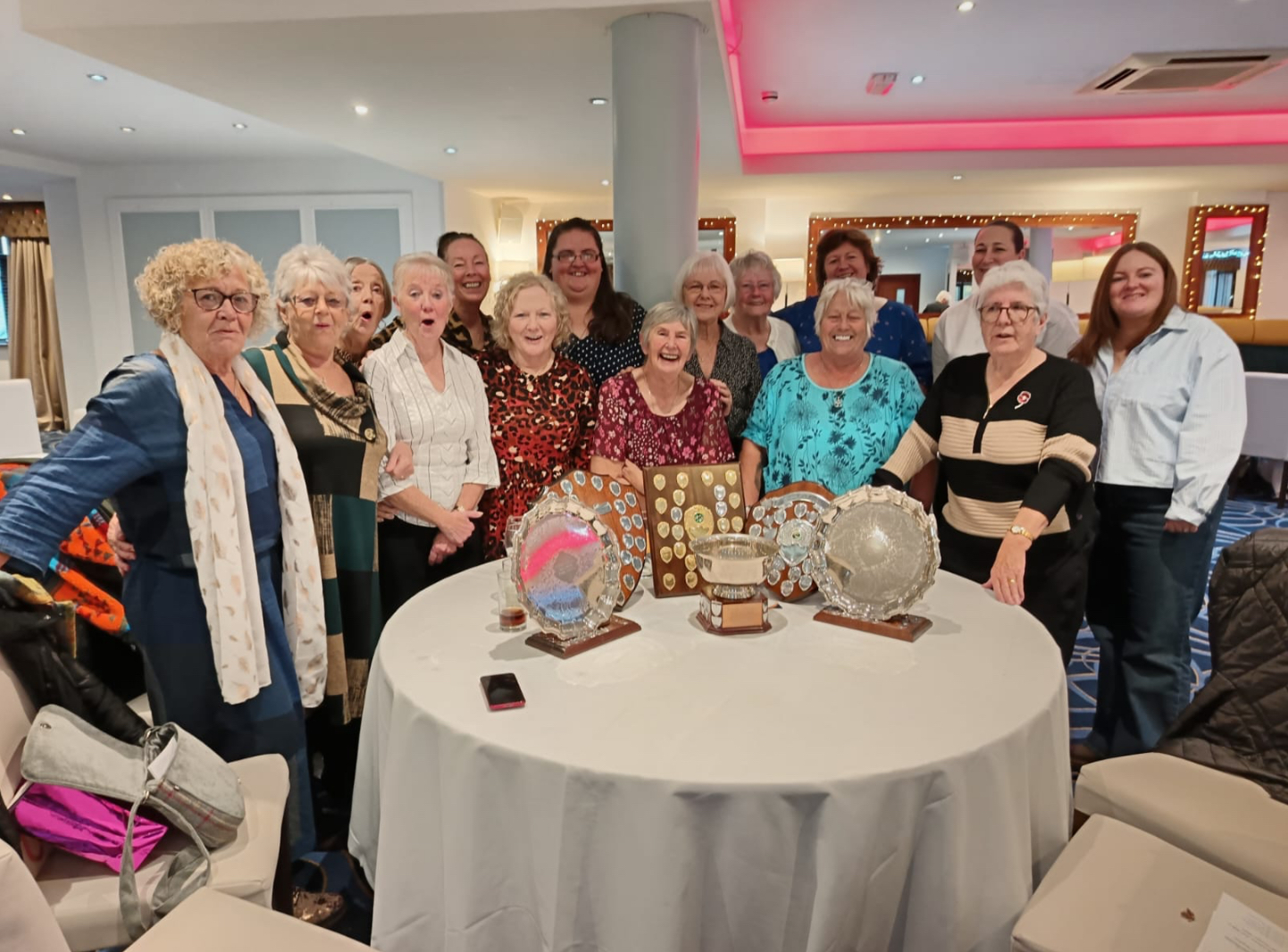
The above photograph shows the Members celebrating at the 2025 West Glamorgan Annual General Meeting after the presentations.
Resolven Ladies won the Monday evening League which consists of 2 rinks of 4 bowlers (playing 2 bowls each) on each rink against 8 opposition Clubs, weekly over the Summer season.
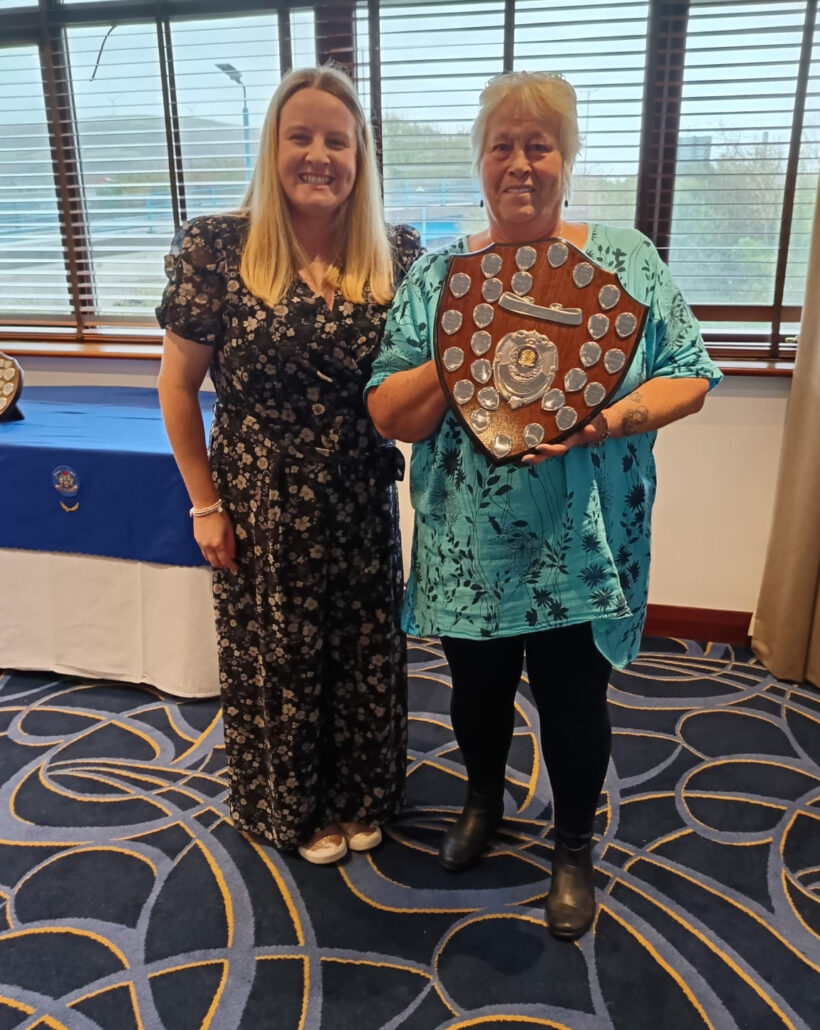
In their first year as members of Resolven Ladies Bowls Club Emma Bennett and Sarah Beynon were successful in becoming West Glamorgan Pairs Champions.
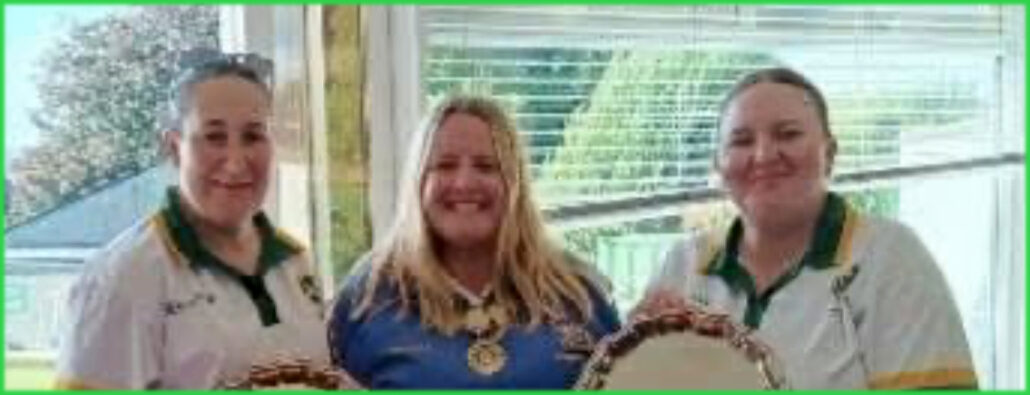
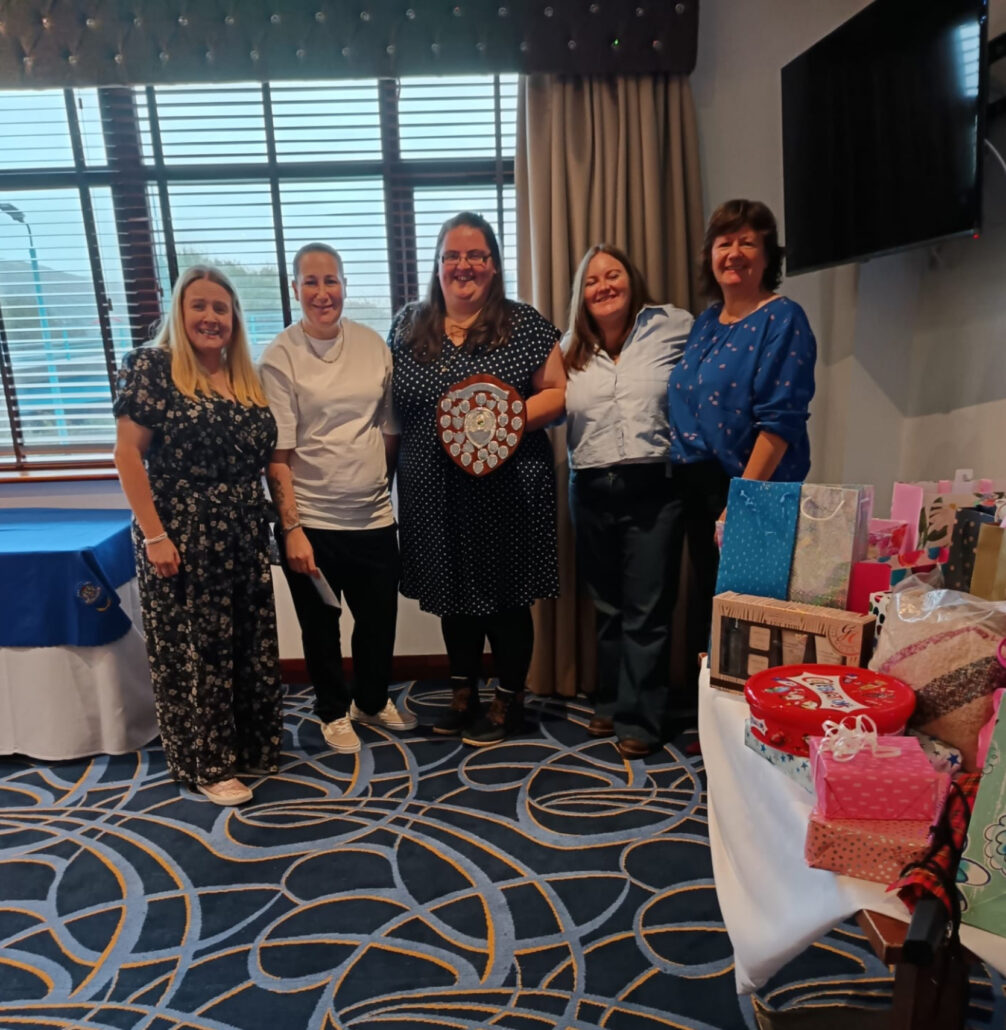
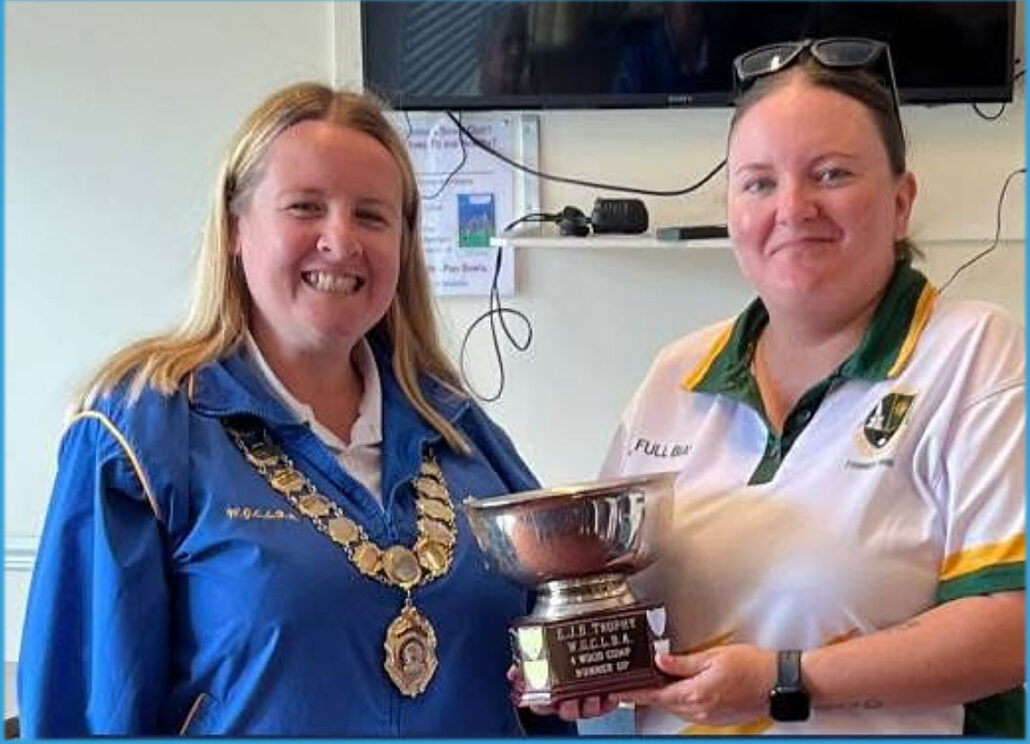
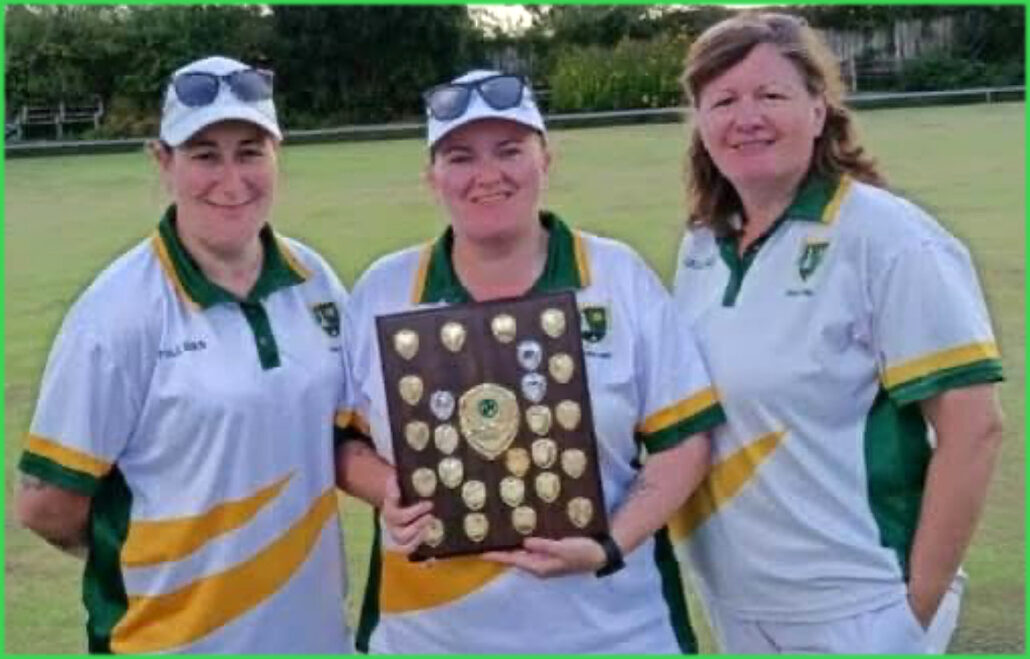
RDN wish Resolven Ladies Bowls Club another successful season in 2026 when they will be celebrating their 40th Anniversary.
~ ~ ~ ~
Memorial Service for Mrs Vina Bradley
On Sunday 2nd November at 6pm there is a Memorial Service for Vina at Clyne Free Mission, followed by a buffet and refreshments.
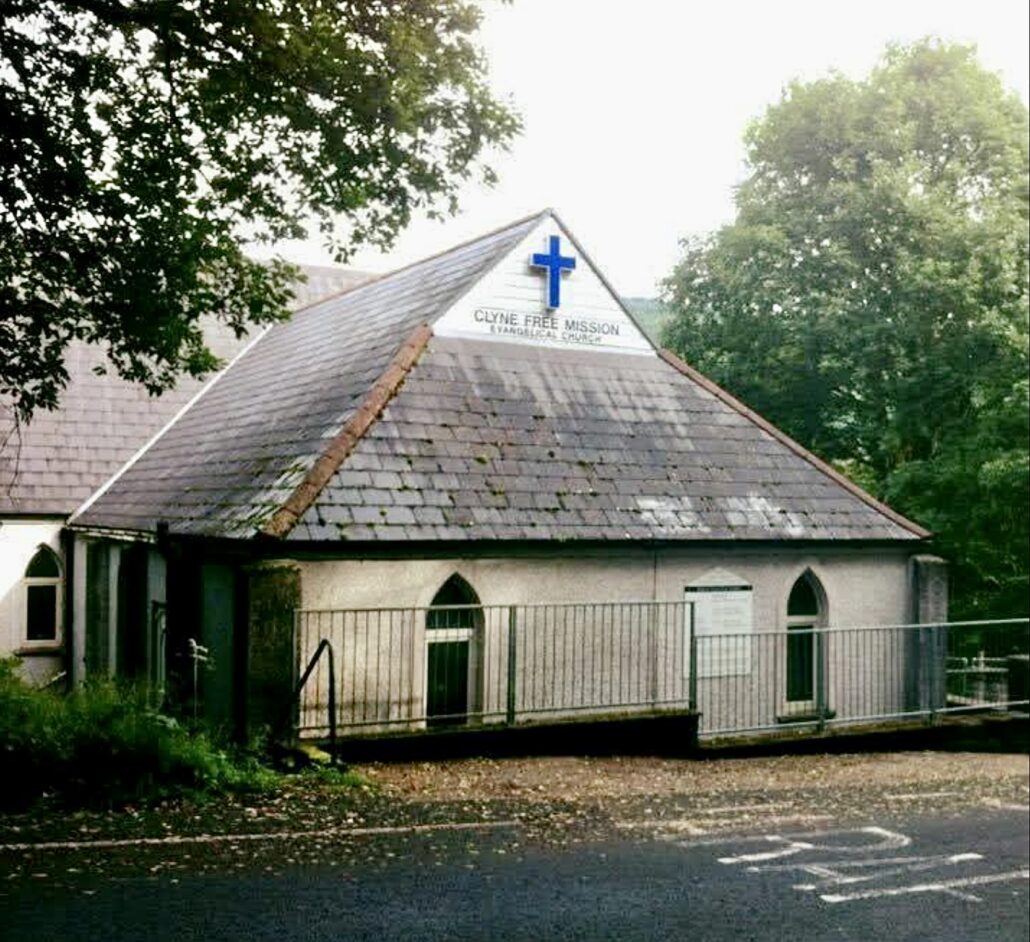
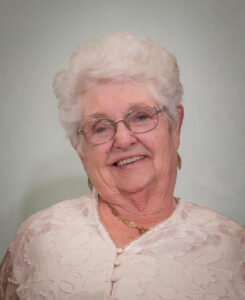
~ ~ ~ ~
Employment and Skills Fund


~ ~ ~ ~
Halloween No Callers Poster
Below is a poster, supplied by the Police, that you may want to display if you do not wish to have callers during the evening of Halloween.
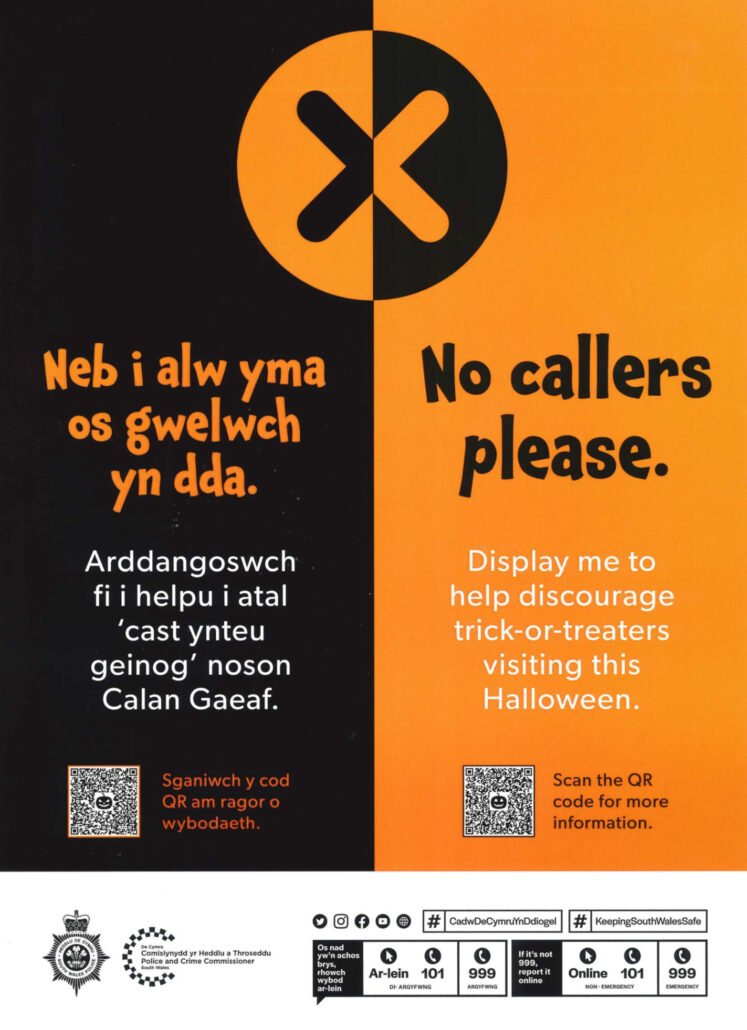

~ ~ ~ ~
Ynysfach WI Foodie & Floral Treat
On October 1st, as the trees start to change to the colours of Autumn
Twenty ladies of Ynysfach WI travelled to Lampeter for a day of culinary delights along with seasonal flowers and fun

Mr Gareth Richards, well known for being a Chef and for Flower Arranging, and who is much in demand
Treated us to a day to remember with every little detail meticulously planned
There was a welcome morning coffee and tea, and mini welsh cakes when we arrived
Before we moved to the ‘demo’ room, Gareth’s fully equipped kitchen of the very best kind
He was so entertaining, so personable, and gave us lots of tips to think about
He was truly an expert in his craft, and a clever sociable speaker of that there is no doubt
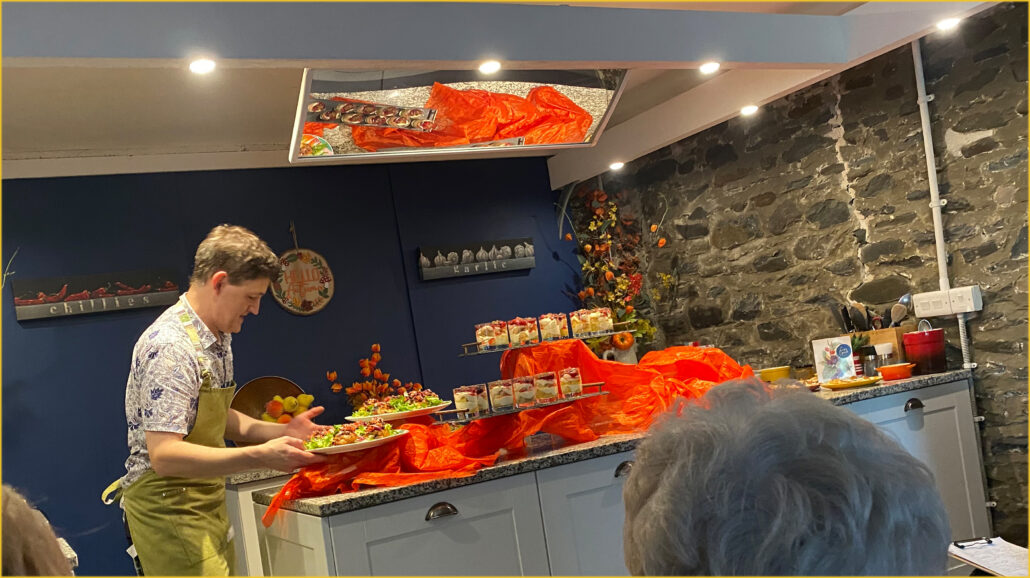
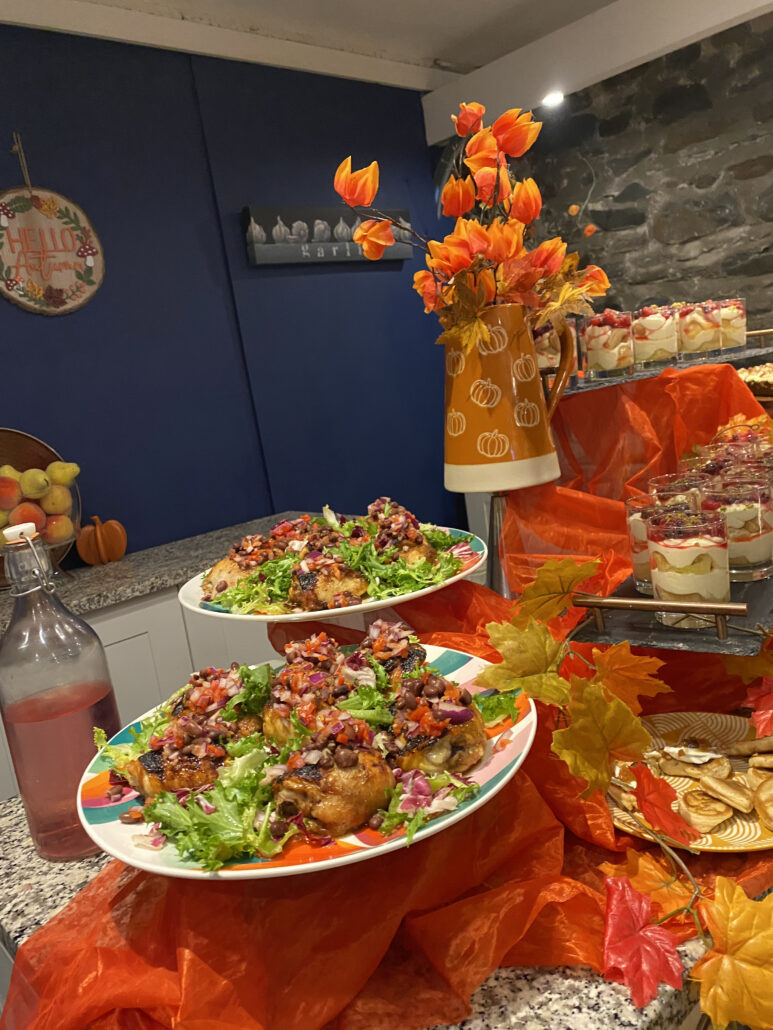
We then sat down to a meal we saw him cooking and that he had prepared for us
All themed around Autumn, which he made look so easy, with the minimum of fuss!!
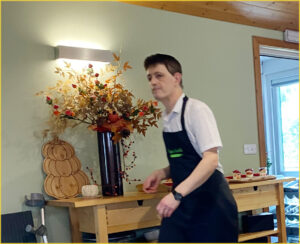
It was tasty and nutritious, well presented and three-courses of a feast
Gareth even served us as a waiter, showing that his sense of duty never ceased
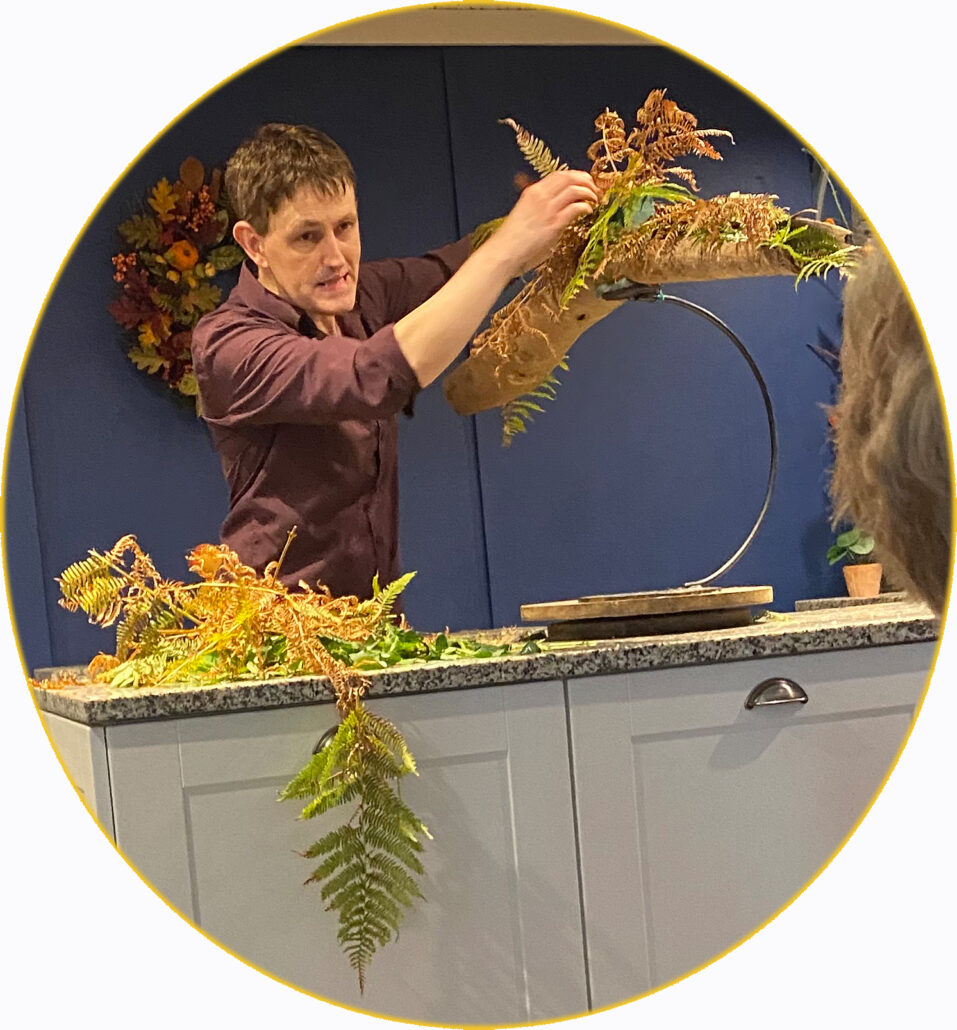
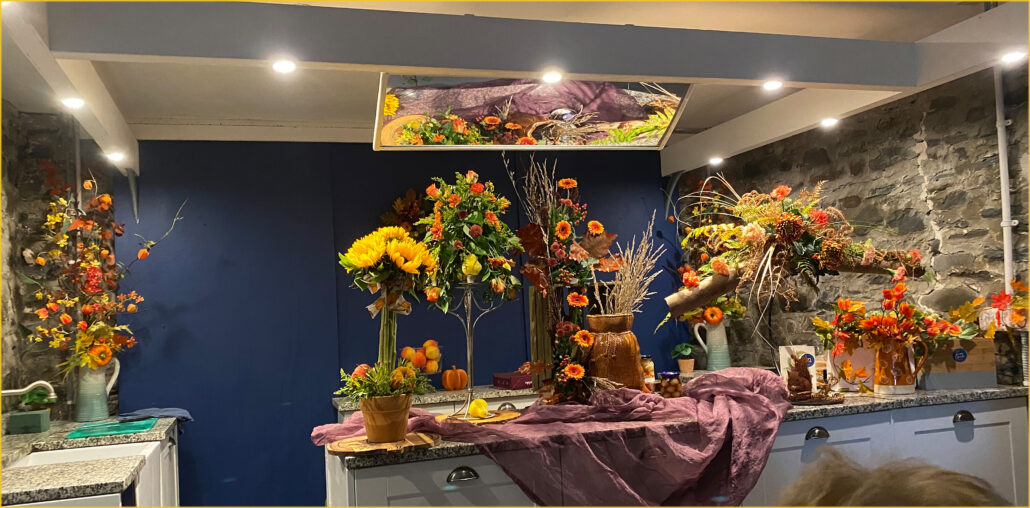
In the afternoon, we returned to the ‘demo’ room, to see him creating several floral displays
Which he duly raffled before we left, which the lucky winners kept as a reminder of the day
It was a delightful day and Gareth’s versatility was very special to see
Thanks again from the Ynysfach WI to a gentleman who has a gift for entertaining that comes to him easily
The day ended with tea and cakes before we boarded the bus for the journey homeward bound
An interesting experience offered by Gareth Richards and family, and surely one that they can be proud to have found!
~ ~
Photographs & Poem by an Ynysfach WI Member
~ ~ ~ ~
Charity Coffee Morning
All proceeds from this event will go to fund the Breast Cancer research and support for patients and their families undertaken by this charity.
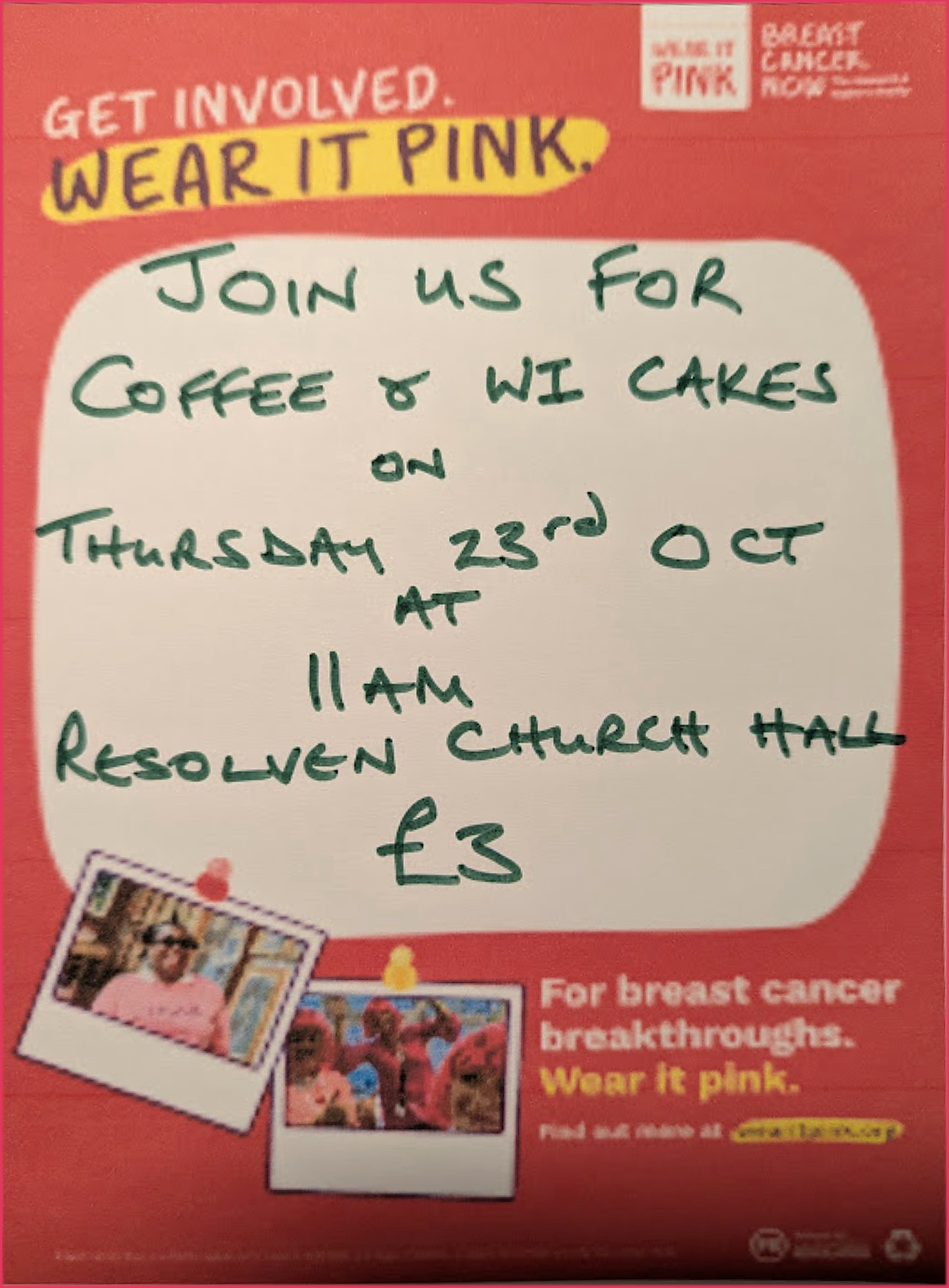
~ ~ ~ ~








